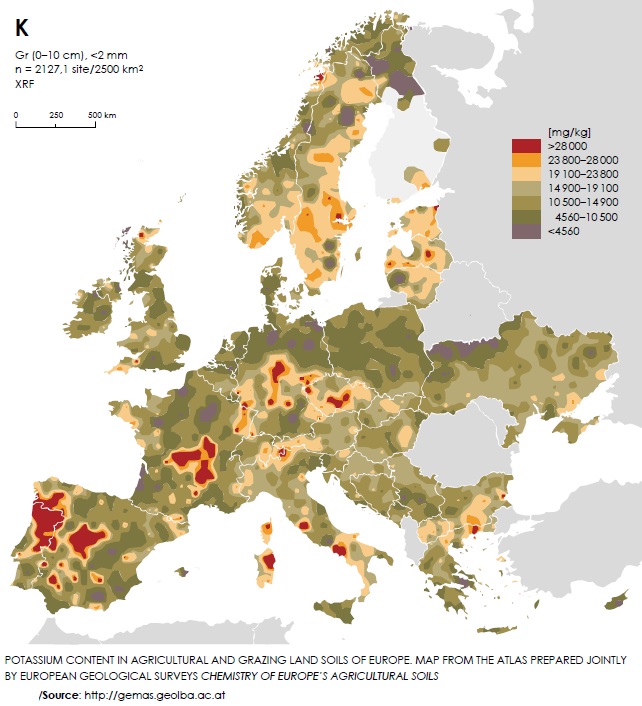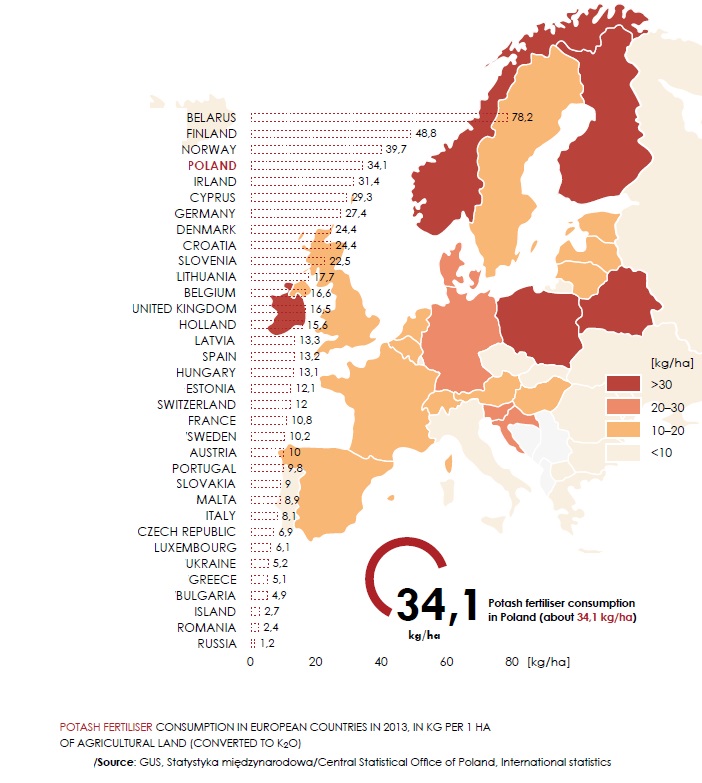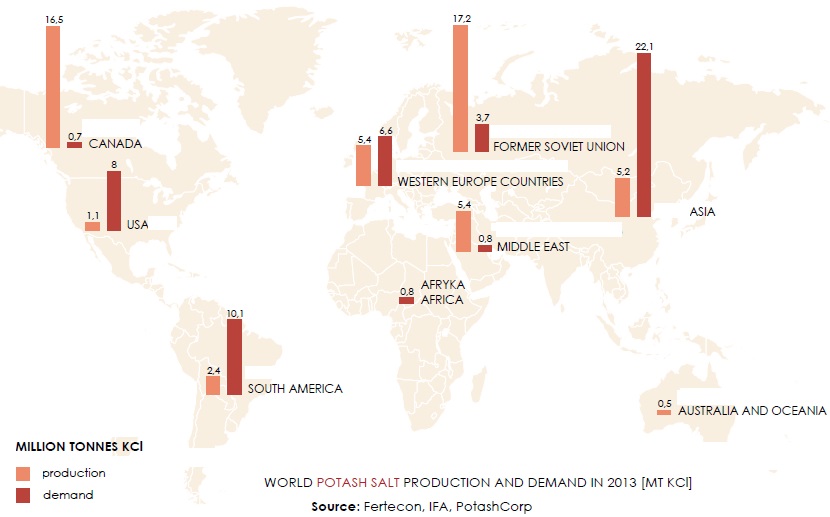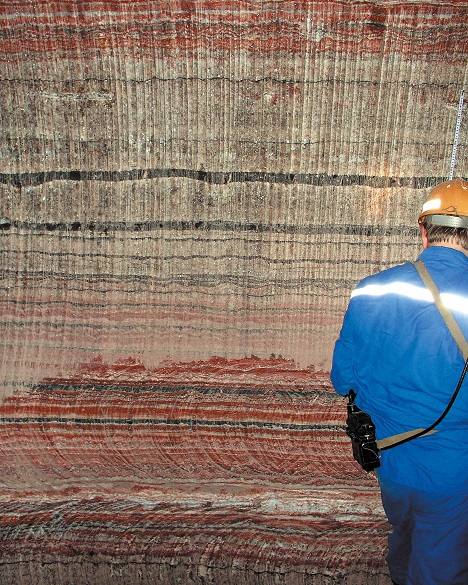Demand
The demand for potassium salts is primarily controlled by agricultural demand that depends on the natural content of potassium in soils. Distribution of elements in soils is governed mostly by geology and climate. Sadly, Polish soils are extremely potassium deficient, comparing to other European countries.

Consumption in Europe
Poland’s demand for potassium-magnesium salts has exceeded 800,000 tonnes in recent years. Poland ranked fourth, after Belarus, Finland and Norway, in terms of potash fertiliser consumption per 1 ha of agricultural soil.

Uses
Potassium is a very important nutrient for the plants. The growth strength of the plant’s storage organs – roots, tubers and seeds – is dependent on the content of potassium in the soil. However, the history of potassium-magnesium salt application is quite recent as it started in the middle of the 19th century on discovery of benefits from mineral fertilisation. Production of artificial fertilisers grew rapidly soon thereafter and now as much as 95% of all potassium-magnesium salts mined worldwide is used by this branch of industry.

Before long agriculture became reliant on mineral fertilisers in developed countries. Today, potassium-magnesium salts are considered as strategic resources. Not surprisingly, as fertilisation boosts crop output, sometimes as much as ten times.
However, prolonged use of chloride-based fertilisers leads to the salination of the soil. Therefore, sulphate variety of potassium-magnesium salts (polyhalite salts), much less abundant in nature, are more appreciated.
Potassium-magnesium salts are also applied in the pharmaceutical industry (e.g. production of infusive and hemodialysis solutions), in glassmaking, textile, paint and coating industry, electrometallurgy, for the production of photographic supplies, in pyrotechnics and many other industries. They are used for the manufacturing of beauty products and perfumes.
Corridor in salt mine in Soligorsk Belarus: the white layer is halite,
red – potassium salts (sylvite and carnallite) and the black – impu rities (clay mixed with sulphates)
Fot./Photo by: Hanna Tomassi-Morawiec

Corridor in salt mine in Soligorsk Belarus: the white layer is halite, red – potassium salts (sylvite and carnallite) and the black – impu rities (clay mixed with sulphates)
Photo by: Hanna Tomassi-Morawiec








